Welcome to a world where your garden blossoms with vibrant life and buzzing energy, all thanks to the incredible power of pollinator-friendly plants! Whether you’re just starting your gardening journey or have years of experience under your belt, this guide will open the door to transforming your outdoor space into a haven for bees, butterflies, and other essential pollinators. By choosing the right plants, you not only enhance the beauty of your garden but also play a crucial role in supporting the delicate ecosystems that sustain our planet.
As you explore this carefully curated list of outdoor plants, you’ll discover the practical benefits of attracting pollinators to your garden, from boosting plant health to increasing your harvest of fruits, vegetables, and flowers. With our expert tips and insights, you’ll gain the confidence to select and nurture the best plants for your specific environment, ensuring both you and your garden thrive. So get ready to dig in and experience the joy and rewards of a garden that not only pleases the eye but also contributes to a healthier, more vibrant world.
Lavender (Aromatic and Bee-Friendly)
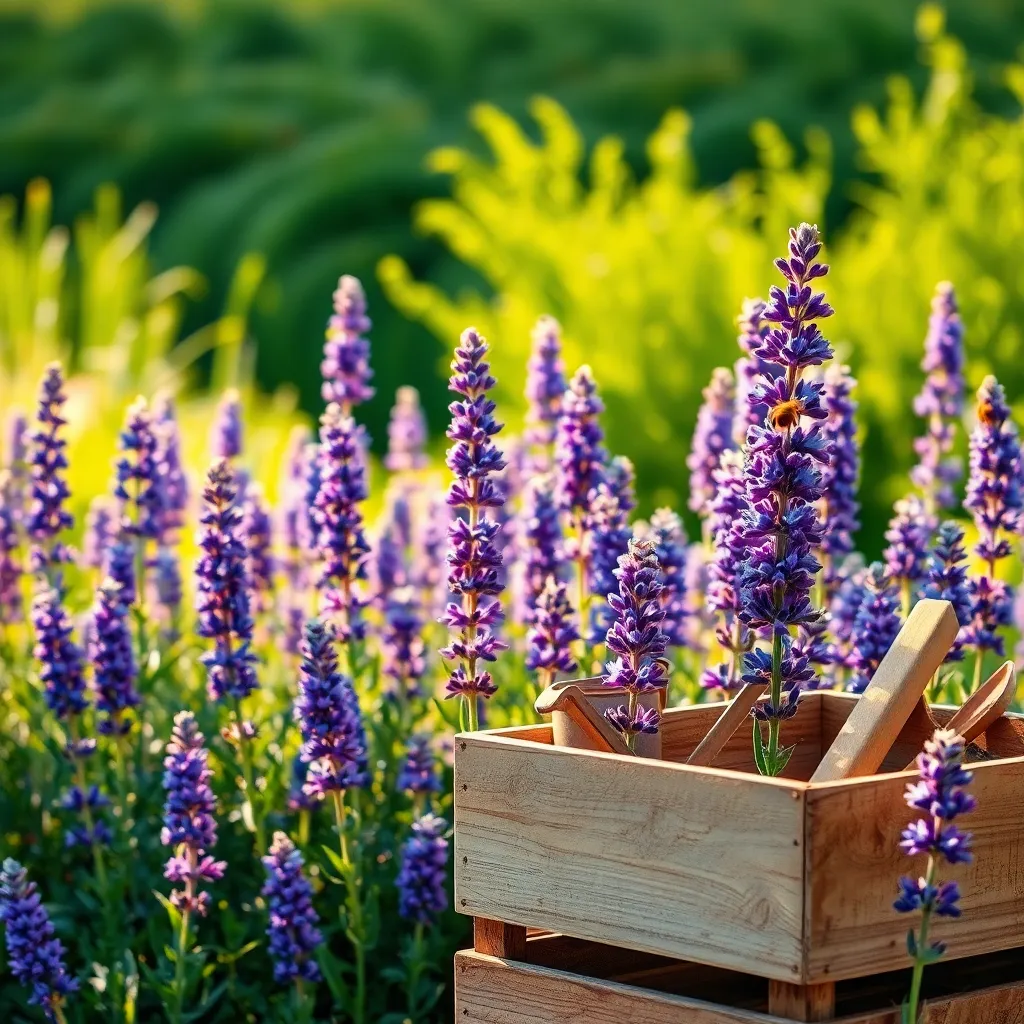
Lavender is a wonderful addition to any garden, known for its fragrant blooms and attraction to bees. This aromatic plant thrives in well-drained soil and requires full sun to flourish, so choose a spot that receives at least six hours of sunlight daily.
To maintain healthy lavender plants, it’s important to avoid overwatering, as this can lead to root rot. Instead, water deeply but infrequently, allowing the soil to dry out between waterings, which encourages deep root growth.
Beginner gardeners will find lavender easy to care for, as it is relatively drought-tolerant once established. For those looking to enhance bloom production, consider pruning the plants in early spring to encourage a bushier growth habit.
Advanced gardeners can experiment with different lavender varieties, such as English or French lavender, to add diversity to their gardens. To propagate lavender, take softwood cuttings in the spring and root them in a mix of perlite and sand for optimal growth.
Milkweed (Essential for Monarch Butterflies)
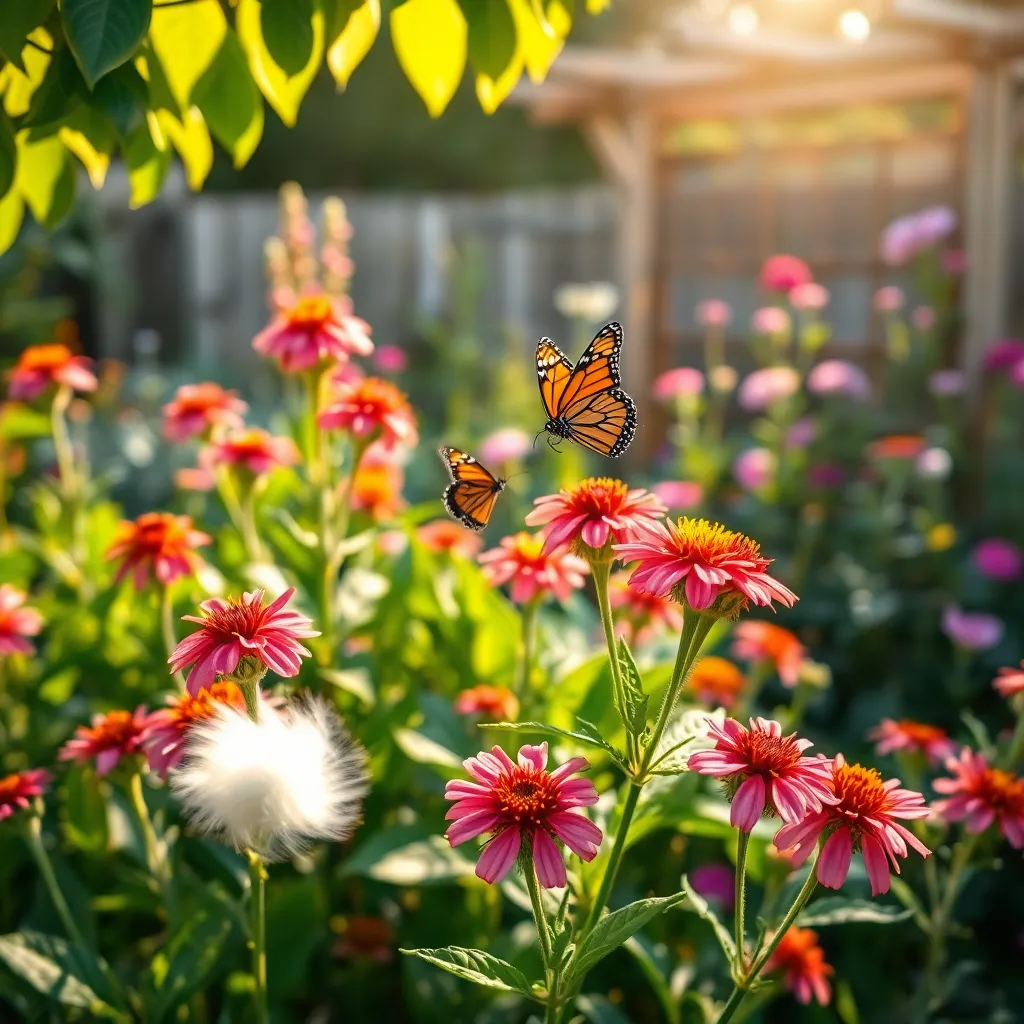
Milkweed is an essential plant for attracting and supporting monarch butterflies, as it serves as the primary food source for their caterpillars. To successfully grow milkweed in your garden, choose a sunny spot with well-draining soil, as it thrives in areas that mimic its natural meadow-like environment.
There are various types of milkweed, such as Common Milkweed, Butterfly Weed, and Swamp Milkweed, each suiting different garden preferences. Beginner gardeners might find Butterfly Weed particularly easy to manage due to its tolerance for drought and poor soil conditions.
For optimal growth, water milkweed plants regularly but allow the soil to dry out between waterings to prevent root rot. If you’re in a region with heavy clay soil, consider raising your planting area or using a well-draining soil mix to enhance drainage and root health.
Advanced gardeners can experiment with propagating milkweed by collecting and planting seeds in the fall, mimicking their natural cycle. Stratification, a process of chilling seeds, can enhance germination rates; simply store seeds in the refrigerator for a few weeks before planting.
Coneflowers (Vibrant Colors for Long Blooming)
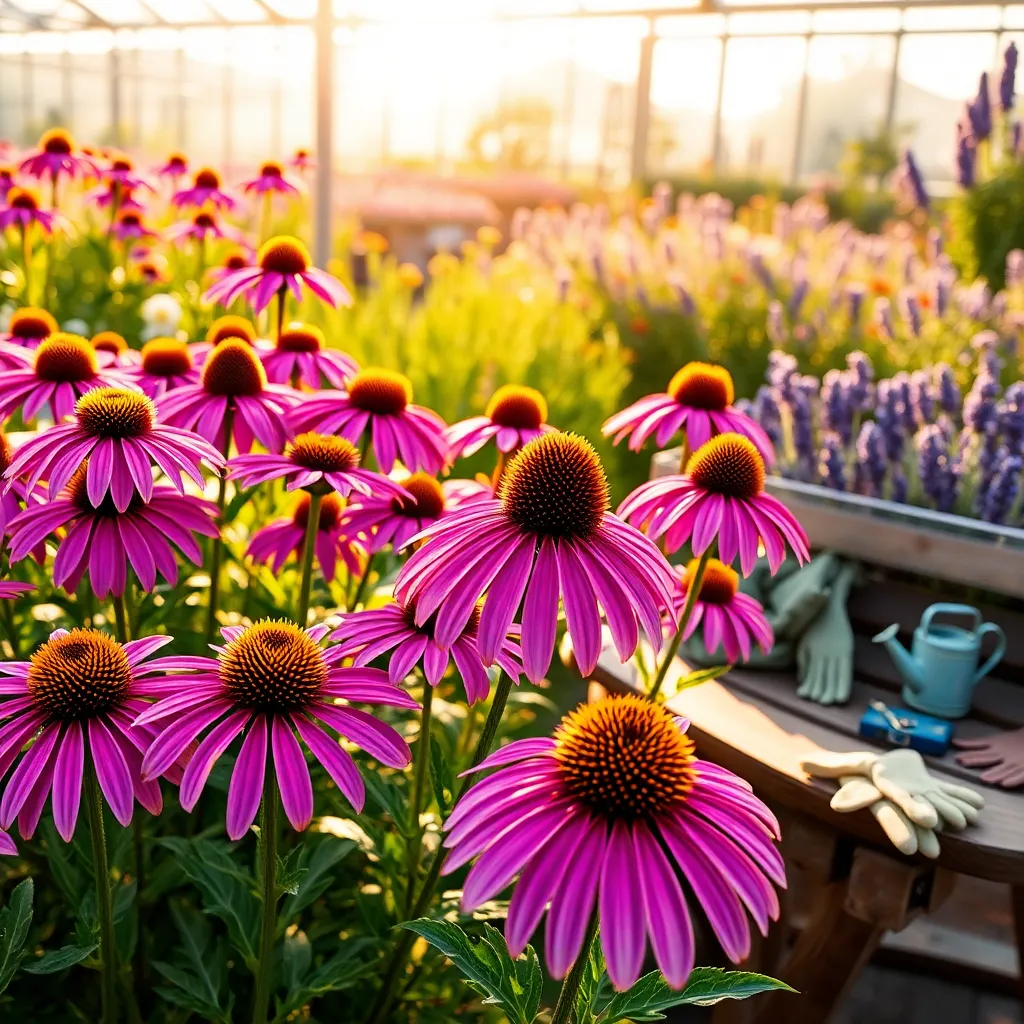
Coneflowers, known for their vibrant colors, are a fantastic choice for attracting pollinators such as bees and butterflies. These perennials are not only visually appealing but also offer long blooming periods, typically from midsummer to fall.
To grow healthy coneflowers, ensure they are planted in well-drained soil and receive full sunlight for at least six hours a day. For gardeners in regions with heavy clay soil, consider amending it with compost or sand to improve drainage.
Water coneflowers deeply once a week, particularly during dry spells, but be cautious not to overwater as they are drought-tolerant once established. Mulching around the base can help retain moisture and suppress weeds, enhancing growth.
For those looking to expand their coneflower collection, dividing mature plants in early spring is a simple method. This not only rejuvenates the existing plants but also provides new ones to enhance your garden’s pollinator-friendly landscape.
Bee Balm (Nectar-Rich and Hummingbird Magnet)
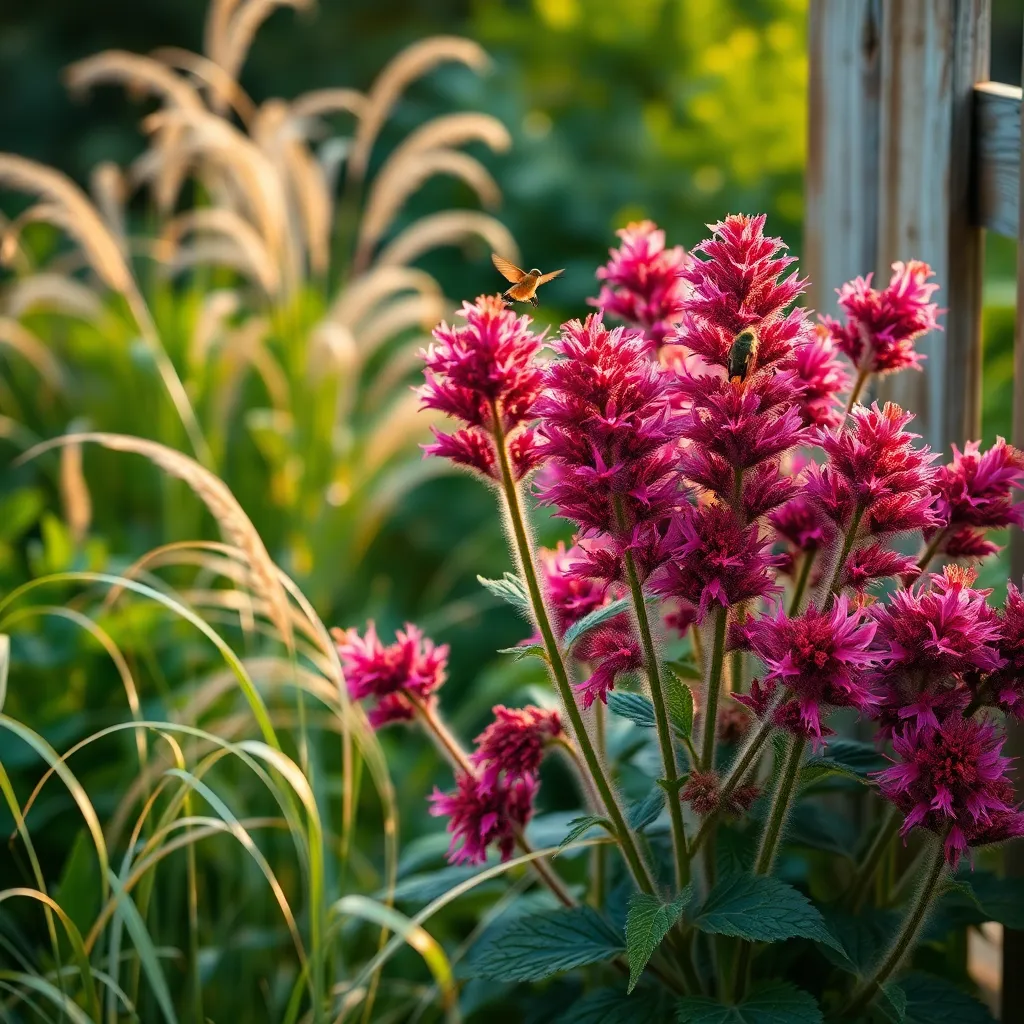
Bee Balm, also known as Monarda, is a vibrant addition to any garden with its nectar-rich flowers that are irresistible to pollinators. These plants are particularly known for attracting hummingbirds, making them a perfect choice for gardeners looking to bring more wildlife into their outdoor spaces.
For optimal growth, Bee Balm thrives in well-drained soil with a good amount of organic matter. It’s best to plant them in a spot where they can receive full sun to partial shade, ensuring they get at least 6 hours of sunlight daily.
Watering Bee Balm requires consistency but not excess; aim to keep the soil moist, especially during dry spells, to maintain the plant’s health. Mulching around the base can help retain moisture and suppress weeds, which is a great tip for keeping the garden tidy and the plants thriving.
Gardeners should also be mindful of spacing, as Bee Balm can spread vigorously. Regularly dividing the plants every two to three years can prevent overcrowding and promote healthy growth, ensuring your garden remains both beautiful and manageable.
Sunflower Varieties (Tall and Seed-Producing)
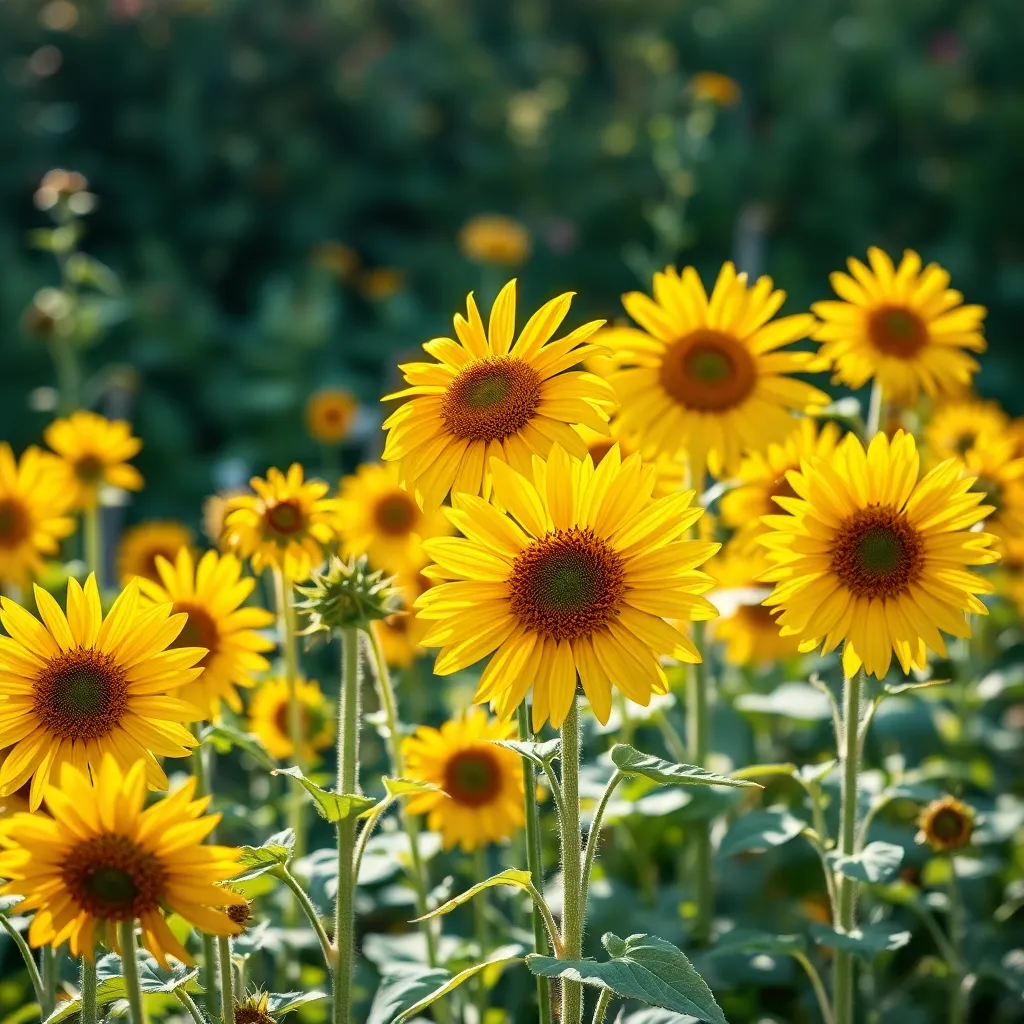
Sunflowers are not only a joy to grow but also a fantastic choice for attracting pollinators to your garden. These towering beauties can reach impressive heights, providing both a stunning visual impact and a rich source of nectar and pollen for bees, butterflies, and other beneficial insects.
When selecting sunflower varieties, consider those specifically bred for height and seed production, which are particularly appealing to pollinators. Varieties like ‘Mammoth’ and ‘Russian Giant’ are excellent choices, known for their towering stalks and large, seed-filled heads.
Plant sunflowers in a spot where they will receive full sun, as they thrive in bright, direct sunlight. Ensure the soil is well-draining and rich in organic matter; incorporating compost before planting is a great way to achieve this.
For best results, sow sunflower seeds directly into the ground after the last frost has passed, spacing them about 12 to 18 inches apart to allow ample room for growth. Water them deeply but infrequently, encouraging deep root development and ensuring the soil remains moist but not waterlogged.
As these sunflowers grow, consider staking them to provide additional support, particularly in windy areas. This simple step can help prevent the tall stems from breaking and ensure that your sunflowers remain upright and healthy throughout the growing season.
Conclusion: Growing Success with These Plants
In nurturing both our gardens and our relationships, creating a thriving environment is key. This article explored five essential concepts: choosing diverse plant species like lavender and sunflowers to attract a variety of pollinators, understanding the importance of native plants such as milkweed, providing continuous blooms throughout the seasons with plants like coneflowers, offering shelter with shrubs and trees, and ensuring a pesticide-free zone for a safe haven. Each of these elements mirrors the nurturing care needed for healthy relationships, emphasizing diversity, understanding, consistency, safety, and growth.
As a next step, consider visiting your local nursery to select a new plant that supports pollinators, symbolizing your commitment to fostering both ecological and personal relationships. By doing so, you not only contribute to the environment but also reinforce your dedication to nurturing connections in your life.
Remember to bookmark this article as a handy guide for ongoing reference. The journey toward flourishing relationships, much like a garden, requires attention and care. By taking these small steps today, you’re setting the stage for abundant growth tomorrow. Embrace the opportunity to cultivate both your garden and your connections, creating a vibrant ecosystem for years to come.
